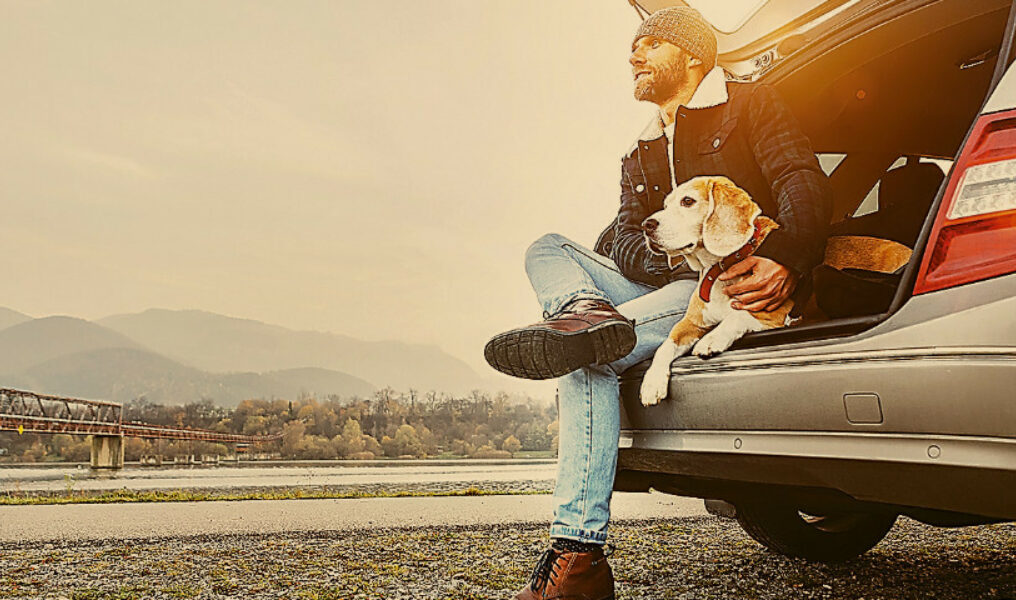By Teresa Odle
It's great to take Fido or Fluffy along on your next driving vacation as long as you carefully plan the trip with an eye toward keeping your pet healthy and safe. "Traveling and vacationing with a pet has increased 300 percent since 2005," says San Diego-based pet safety expert Christina Selter. "That's the reason we're seeing more accidents where the pets are injured."
Selter is taking aim at the problem as founder of consumer group BarkBuckleUp, which educates pet owners and evaluates pet-safety products using focus groups. "We look at the quality, the craftsmanship, the product, how easy it is to use," says Selter. Approved products are posted on BarkBuckleUp's Web site to help pet owners make safe choices for their pets.
Recently, BarkBuckleUp cited the Volvo XC90 crossover SUV as being the most pet-safe vehicle in the U.S. Selter says the group evaluated several brands, but it chose the Volvo model because of a factory- or dealer-installed pet kennel for the cargo area of the vehicle and because of Volvo's overall focus on safety.
Kennels are one of the restraint systems owners can use to keep pets safe in station wagons, vans and SUVs. But to work best, they need to be fastened securely to the cargo hold. Many cargo areas have "D" rings that can secure harnesses attached to the kennels. Selter says cats and small dogs prefer soft kennels, which can be attached by seat belt in the back seat. Harness restraints come in varying sizes and also attach to seat belts. "They buckle around the dog's chest so they don't pull on their neck," says Kelly Connolly, issues specialist for companion animals at the Humane Society of the United States in Washington, D.C.
Why restrain your pet at all? First and foremost is the animal's safety. Just like humans, cats and dogs can be more severely injured in an accident if it is unrestrained. Your own safety also matters. In a 35 mile-per-hour accident, a 60-pound dog can turn into the equivalent of 2,700 pounds of deadly force, possibly injuring or killing a passenger.
Then there are accidents a pet can cause. Selter said a bill recently passed in the California House outlaws pets sitting in drivers' laps while driving. And when accidents occur, pets can become stressed. Some may escape through a window or door, darting into traffic and causing another accident (for which you're responsible) and possibly getting hit by an oncoming car. The back seat or open cargo area is always preferred to the front seat and pick-up beds never are safe for dogs. In fact, the practice is illegal in some states and counties.
Finally, BarkBuckleUp is working to improve the problem of pets and first responders to automobile accidents. "They can't get into the vehicle without removing the pet. But if the pet is secure in a safety harness or kennel, the responder can more easily and safely get the pet out of the vehicle and get into the car to help the humans," says Selter.
To help stressed pets and first responders, BarkBuckleUp has teamed with Volvo to distribute pet safety kits beginning June 1 at participating Volvo dealerships. The kits are first-responder approved. They consist of ID cards with pet information, emergency contact and vet information that go into the glove compartment and driver's wallet. A decal that's affixed to the driver's-side window alerts first responders that a pet may be inside.
This sticker can be helpful even if you've left Fido or Fluffy at home that day. "Let's say your pet's not in the car and the responder sees the decal. They know you're not going home but are going to the hospital, so they pull the card with emergency information and notify someone who can care for your pet," says Selter.
The Humane Society's Connolly suggests that safe pet travel begins with planning. "Whether you're just going to the store or on a vacation, decide if you really want to take the pet and if it's the best thing for your pet," she says. Considerations include the effects the trip and the weather might have on your pet's health. For instance, Connolly says it takes less than 30 minutes for a parked car to heat up to 110 or 120 degrees, even with the windows open, which is too hot for a dog. You'll need to make frequent stops and plan ahead for pet-friendly rest stops, campgrounds and hotels or bed and breakfasts.
"Just think ahead and decide, 'is this best for my pet and if so, what do I do?'" Or as BarkBuckleUp's motto says, "Be smart, ride safe."










